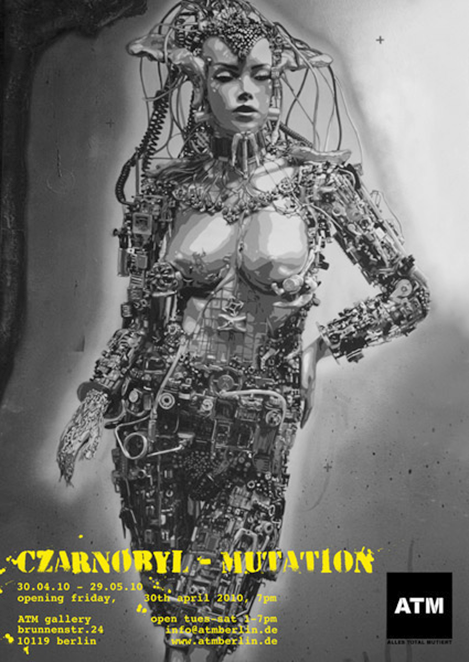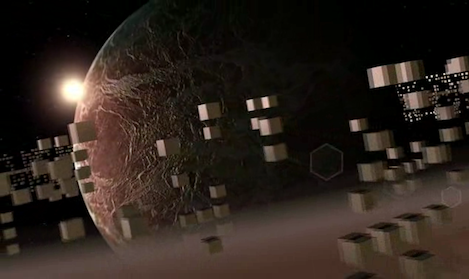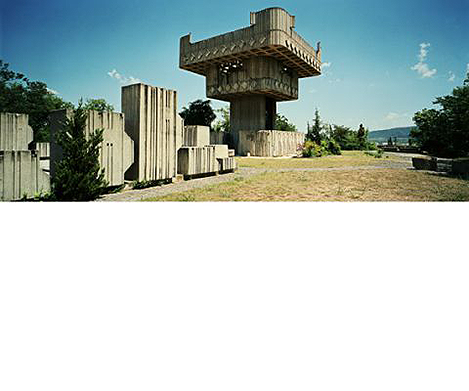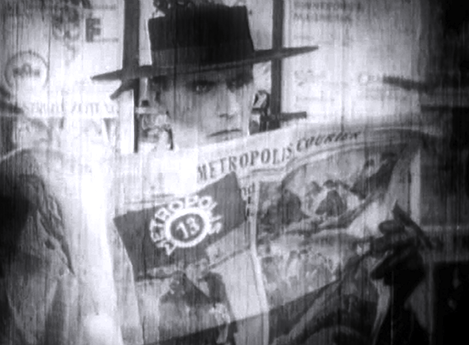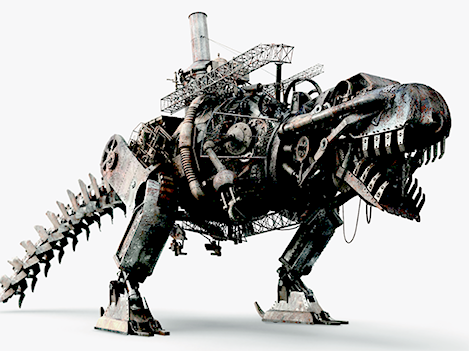
The '21st Century Porsche' – hopefully they don't put a James Dean avatar into its future-proof cockpit, courtesy Dr. Ing. h. c. F. Porsche AG
There is a saying that, on a medium turn basis, any car manufacturer in crisis could achieve a turn-around just by offering great cars. The Dr. Ing. h. c. F. Porsche AG was a manufacturer in crisis – until Monday evening, March 1, 2010, when the by now tenth Volkswagen sub-brand presented its concept study 918 Spyder [1] which rocked the traditional VW band wagon press event on the eve of the opening of the 80th Geneva International Motor Show. [2]
After nearly twenty years of ongoing success – predominately under the aegis of former CEO Wendelin Wiedeking – Porsche had lost its track and permutated into a presumptuous hedge fonds monster that aimed to acquire and lastly failed to consolidate the factor 10 bigger VW group. This was the final hybris as the result of a remarkable turn-around which started 1989 with the cut of the production-ready 4-door sports-sedan 989 in favour to just focus on the brand’s iconic 911 sports car and to phase-out all the other semi-fortunate front-engined models from the 1970s like the 944 respectively 968 series as well as the fat cat V8-powered 928 Gran Tourisme coupé.
A die-hard 911-only production line-up saved Porsche as a independent manufacturer in the beginning of the 1990s and let the company earn enough money to leap forward into modern automotive industry’s production realms and to finally – after nearly 35 years of production and continuous evolution – establish a new sports car platform that premiered with the mid-engined Porsche 986 Boxster in 1996 and the 1997 launch of the even more crucial rear-engined 911 Carrera successor 997. Both cars brought water-cooled boxer engines to the sports car range, extricated Porsche’s core product from the 1937 VW Beetle heritage without diluting the brand’s unique technological identity as the Audi-bred 924 range did twenty years ago.
The Cayenne Was a Spicy Sales Turbo
The next big step of “Wiedeking Midas” was the invention of a the spicy Cayenne SUV series, a class so different from the common Porsche sports car range that even the die-hardest amongst the Porsche afficionados could live and drive with it because of its sheer practicability. Brand loyalty wasn’t longer an act of self-asceticism or of – even worse – domestic violence against wife and children. Social acceptance eventually was an issue – the Cayenne was more a mighty utility vehicle than a Porsche-typical sports car targeted to please even the SUV-mad North-American market. Besides the more than careless fuel consumption it was the somewhat plump and blown-up design that endangered the company’s broadly accepted reputation.
Nonetheless the Cayenne was a success story and broadened the road for Porsche to be more than just a one-trick-pony. And the Cayenne’s mid-term face-lift resulted in a subtle, but effective design change that added a sort of Italian elegance to the big bold 4WD SUV ogre – in the meantime accused by many as one of the main causes of climate change. The second big step in the Wiedeking era almost risked to fail in the turmoils of the financial crisis and the on-going merger and acquisition battles in 2008 and 2009. It was the launch of a new model series that re-interpreted the 989 attempt twenty years ago which almost had killed the company: the 4-door Panamera sports sedan.
Panamera Is Not a Hand Lotion
Some say that that there were rarely a worse moment to launch the wrong car with a crippled marketing name. “Panamera” is an invention of “labeling czar” Gotta, is derivative of the prestigious Mexican Carrera Panamericana rally raid that inspired Zuffenhausen’s name finding from the early victorious heydays on. Probably the marketing guys didn’t like the full name not only because it were too long to get attached to the car’s wide stern, but to not stir up Anti-American affections amongst Porsche’s important Middle-East customer base in Saudi-Arabia and the Emirates.
The car is in its tiny market niche – you could mention the Maserati Quattroporte, the Aston Martin Rapide and the Mercedes-Benz CLS in AMG version – technologically a class of its own and delivers more sports car feeling than the competitors. But, similar to the Cayenne’s original design, it doesn’t look so Porsche-like than it should. In favour to rise the greenhouse’s capacity at the backseat row they spoiled the sporty 911-inspired line and created a more than bulky back-end. Following the example of the first Cayenne generation, we will hopefully see a more audacious mid-term face-lift that will vamp up the car towards the designers’ initial ideas.
And by the way, the latest 911 Carrera 998 face-lift wasn’t the brand mover than the fans would have expected. Even dedicated Porsche enthusiasts would have problems to indicate immediately in the wild if there was the new 998 instead of the six-year old predecessor in front of them. In the end the only fascinating activity – aside rocking the stock markets and forcing well-established, but mis-speculating entrepreneurs into suicide – was the opening of the Stuttgart-based new Porsche Museum. A spectacular architectural sculpture that above all seems to communicate how shallow the company’s car design has become in the meantime.
So, Porsche Really Has Got a Problem
Coming back to the initial statement of this post, that any car manufacturer could solve his business problems by just inventing great cars, Porsche seems to have learned the lesson that suicide because of facing death is not an option. The March 1, 2010, presented 918 Spyder is a bold move not only for Porsche, but for the entire car industry. It shows that the invention of new ‘green’ technology must be part of a top-down strategy, instead of bottom-up. Elitist high-tech solutions – albeit environmentally enlightened or just performance-driven – are a primarily moment for automotive fascination and they will sparkle innovations in the standard models. For the Porsche brand itself the 918 Spyder is crucial because the company is coming on a par with its two major Italian competitors again to define the sports car’s cutting edge. Ferrari really made tremendous progresses in technology, reliability and over-all sophistication without losing its traditional fascination as the most desirable brand and the VW-owned Lamborghini, backed up by the concern’s enormous technological and business capacities, could establish a stance as a more than purely exotic and outrageous testosterone-driven fashion statement.
Porsche 918 Spyder – The Overall Package
Although I would have liked to see a closed-cabin coupé instead of another Spyder after the 918’s super car predecessor Carrera GT there is some race-bred marketing logic in this decision. First of all, the Carrera GT was a success in the high-market super car segment and it results in a sort of sound business logic to not give-up a well established market position. Secondly, Ferrari’s contemporary counterpart of the GT was an uncompromising thoroughbred Formula-1 inspired race coupé, the Ferrari Enzo Ferrari, whereas the Carerra was the even better race track performer by also providing boulevard cruising capability for the extroverted gentleman driver. Thirdly, package-wise, the 918 Spyder draws inspiration from Porsche’s current very successful Le Mans Prototype Class 2 RS Spyder which brings in real race credibility to the new concept study which consensually won’t remain a study. Hopefully the production car remains it stunning compact dimensions. Size does matter in the super car league, but often to impose a certain will for supremacy against practicability.
Forget the Toyota Prius – Green Technology Is Ready to Race
These are the most important facts of the 918’s plug-in hybrid powertrain, called PIP – Porsche Intelligent Performance: A 500-horsepower gasoline V8 with 4,6 litre capacity – a derivative of the LMP2 RS Spyder engine (?) – supported by three electric motors, in front and rear axles as well as integrated in the gear’s double-clutch, delivering a surplus of 216 zero-emission horsepowers. Porsche claims to move the car with a carbon footprint of only 70g/km in economy mode and to provide a consolidated fuel consumption of only 3,0 litre per hundred kilometers. These are fable figures for a 700-plus-horsepower super car. It indicates a complete paradigm shift in automotive culture. You like to go buying your breakfast Brötchen by car? As the owner of a super car this wasn’t a good idea until now. When returning home the Brötchen still might be kept warm from the oven, your engine wasn’t definitely not yet. With a 918 Spyder freshly charged up in your garage overnight and good for 25 kilometers you could roll in E-Drive mode to your favorite bakery – sneaking silently and smoothly in a stealth mode. What a show – without any roar!
But the electrical engines are not only good for urban stealth mode in 30 km/h speed limited zones, they are supporting the race-bred high revving engine with low-end torque when needed to cope with the vernacular power diesel Kombi in everyday Autobahn traffic (Hybrid mode) or to deliver the jet-like afterburner extra-punch when really getting serious with the car in Sport or Race Hybrid mode, latter on track preferably. These are new dimensions in super car abilities and even when these features appear at first in the absolute high end of the premium car segment (400,000 EUR and more), it is good news, because these power features will hit the shelves of the standard production car segments for the rest of us until 2020, latest.
It was high time for Porsche to set standards and front running this new technological era. Ferrari is going to launch hybrid-mode super cars like the 599 GTB Fiorano HGTE or the Enzo successing code-named F70. And not to forget the small, but pioneering small e-vehicle boutiques like Tesla or Fisker. Porsche, now, is delivering a complete package satisfying all the desires that you would associate with hybrid powertrains: A comprehensible stand-alone zero-emission E-Drive mode for urban and inner city environments, a plug-in rechargeable battery system and uncompromising performance figures through electrical support in the sports car program specifications. [3]
Re-Vamping the Porsche Style
Last, but not least, the design of the Porsche 918 Spyder is a revelation after the above moaned style flaws and lacks of attitude in the entire model range. First of all, ‘biorganic’ retro-design is dead! More than fifteen years Porsche celebrated their back-to-the-roots design festival, but lost contact to the contemporary “new edge” design language paradigm. The 918 is unmistakably Porsche, but its front lights derive from rectangular basics, its overall shape in no longer a blown-up 365 plumper style, but an athletically defined, techno-futuristic machine that is breathing race flair and is transpirating mesmerising electrical agility.
The front-end incorporates integrated spoiler-like cooling vents intersecting with a sculptured snood that is deeply ducked to the ground. It is a familiar Porsche face, but it is a futuristic re-interpretation which in a complementary way focus the aggressive shape of the lower underbody carbon fibre air intake. The mid-body is waisted in favour of further lateral air and cooling intakes which are wrapping the wider rear end with a sharp spoiler-attached stern. The rear lights graphic is clean and aggressively looking, the complete contrary of the Daliesque and obviously Kia-inspired shapes of the new Cayenne’s ones. The engine hood with its two characteristic bulges and central air vent looks so technologically extroverted in comparison to the 918 predecessing Carrera GT.
The cockpit and dashboard also reclaim to provide a big step forward for Porsche’s often criticised and kind of inappropriate interior design. It provokes in me the feeling it could set you in control of a deeply sophisticated, highly evolved technological system instead of just a car. After years and years of whimsically intersected gauges the first time we can see that this nonsense comes to an end: They are just slightly visually overlapping because the instruments are housing in separately arranged stand-alone shells.
Whatever Porsche is planning with a possible production run of its latest Geneva hit, more relevant is, even it remained only a design exercise, the 918 Spyder is opening a lot of promising options for the upcoming 911 and Boxster/Cayman generations to regain the meanwhile sporadically bored and yawning audience for Porsche again. And you will see how many Hollywood celebrities will escape their Toyota Prius or even Tesla roadsters fast to drive a really electrifying Porsche super car. We should applaud them when changing to the better.
[1] Dr. Ing. h. c. F. Porsche AG Corporate Website Linked to 918 Spyder Webspecial
[2] Official Website of the 80th Geneva International Motor Show
[3 Porsche’s Press Release in English Language with Lots of In-Depths Technical Specifications


